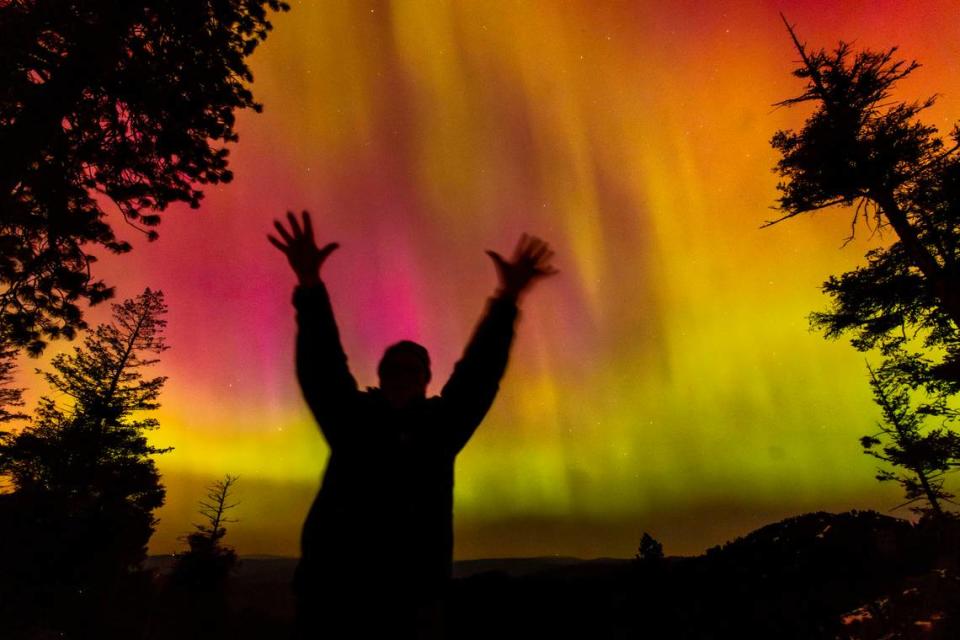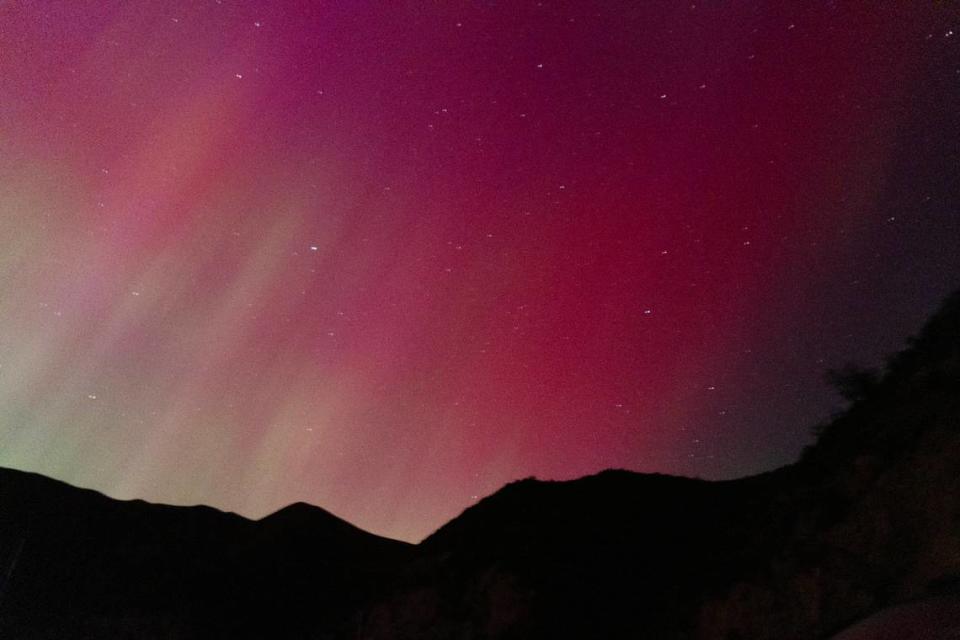Don’t worry, Idaho, you may still have one last chance to see the aurora Sunday night
Any Idahoans feeling like they missed out on a once-in-a-generation solar storm may have one last chance to see itSunday night.
The “ongoing geomagnetic storm will likely once again become intense” later in the day on Sunday, the National Oceanic and Atmospheric Administration’s Space Weather Prediction Center said on social media.
The prediction center issued a Severe Geomagnetic Storm Watch on Sunday. NOAA uses a scale that ranges from G1 to G5 for geomagnetic activity.
Friday was the first time the prediction center has issued a G5 Severe Geomagnetic Storm Watch since 2003. Sunday marks the first G4 watch since 2005.
“The Space Weather Prediction Center is predicting another peak in the solar storm that’s coming out of one of the sunspots on the sun,” Spencer Tangen, meteorologist with the National Weather Service in Boise, told the Idaho Statesman in a phone interview.
“That’s essentially what’s driving the Northern Lights with the aurora that we were able to see a couple of nights ago,” Tangen continued.
He said experts predict another peak beginning Sunday afternoon that will be visible once skies darken after 10 p.m. and could last until 3 a.m. or 4 a.m.

When it comes to viewing the impressive light show, Spencer’s one concern was cloud cover. Weather patterns indicate clouds could begin rolling over the Treasure Valley around midnight.
While the solar storm’s intensity dropped sharply Saturday, a spike is expected Sunday, Tangen said.
“The forecast isn’t quite as strong as it was Friday night, but it’s still pretty rare that we see a G4 severe solar storm watch,” Tangen said.
For the best chance of seeing them, those in Boise should get to areas with low light pollution, experts told the Idaho Statesman.
Meteorologists are predicting Sunday could be the last opportunity to see the Northern Lights.
It may still be possible to see the aurora on Monday night, Tangen added, but the likelihood is lower, and it would only be the tail end of the solar storm.
The aurora borealis phenomenon is triggered by solar storm particles entering the Earth’s magnetic field and interacting with atmospheric gases, creating a colorful, glowing display that’s typically visible closest to the North and South poles, the Idaho Statesman previously reported.


